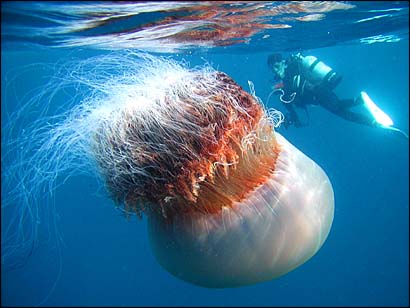Giant Jellyfish are part of the Cnidarians phylum. This division of marine organisms are distinguished by specialized cells called, cnidocytes that are used to capture their prey. Their body structure is made up of a jelly substance called mesoglea. Cnidarians have two body forms, Medussae and polyps. Both are radial symmetrical with tentacles, a single cavity used for digestion, and one output and input for consumption and exertion.

Giant Jellyfish (Artic Lion’s Mane) are found in Artic waters. There is not much known about this species because of the lack of research it has undergone. These organisms, like any other jellyfish have three major components that make up its body structure; the bells, which propel it, the tentacles, that sting and capture prey and flaps, that are used to eat their food. The only unique difference is that these jellyfish can reach up to 8 feet long and 6 feet wide. However, their diet consists of small organism such as plank tonic crustaceans, fish eggs and larvae. Although the Lion’s Mane Jellyfish sting is dangerous to some marine organisms, it can provide shelter and protection for other organisms such as shrimp and small fishes.
These jellyfish reproduce by fertilization, then when the polyps are released they attach to a shaded surface and create colonies. These then grow into full grown medusa, the second life form jellyfish take.